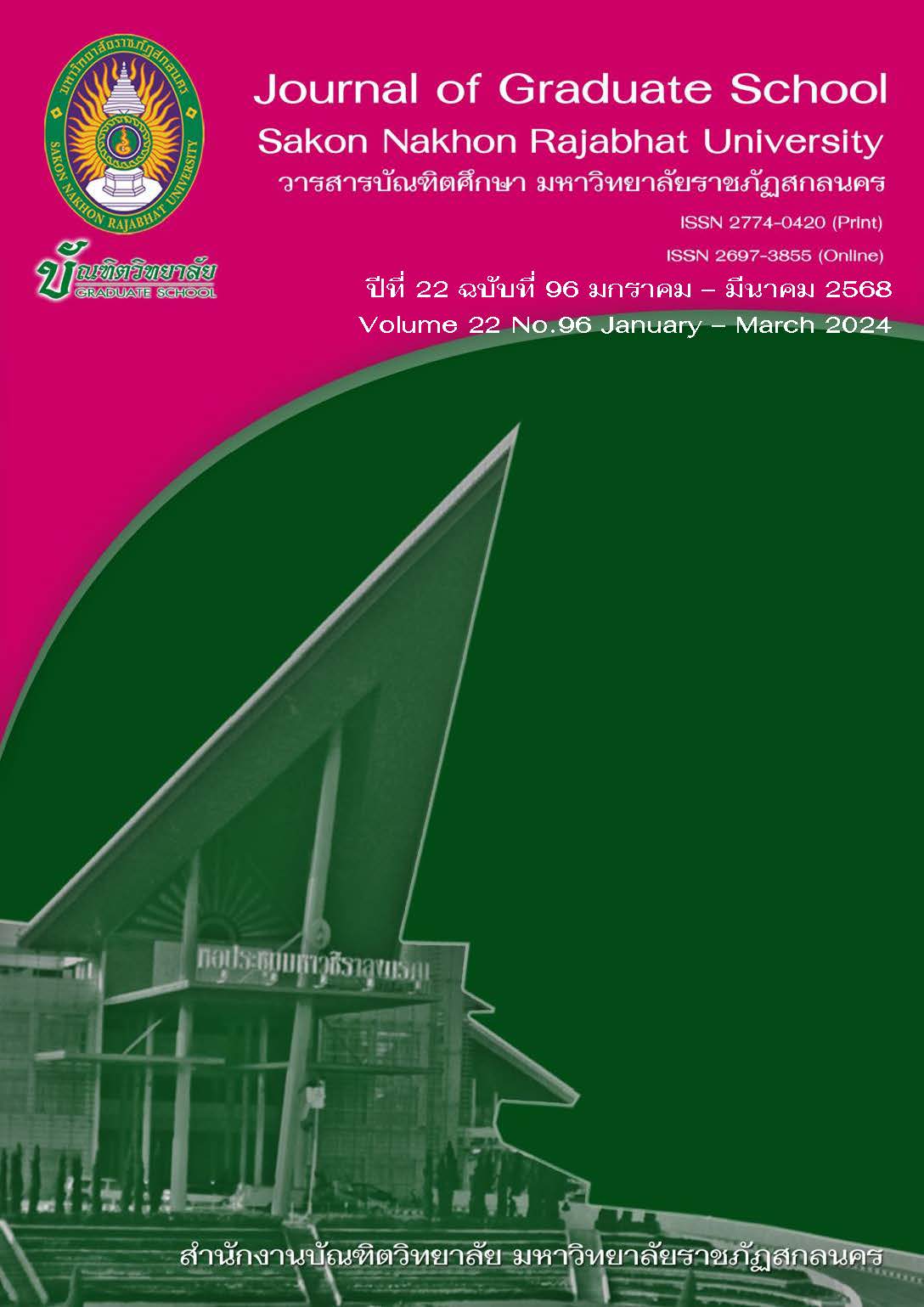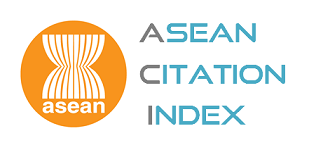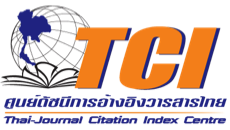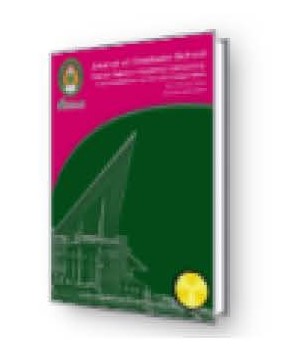ADMINISTRATIVE FACTORS AFFECTING THE ENTREPRENEURSHIP OF STUDENTS UNDER THE SECONDARY EDUCATIONAL SERVICE AREA OFFICE NAKHON PHANOM
Keywords:
Administrative Factors, Entrepreneurship, Secondary Educational Service Area Office Nakhon PhanomAbstract
The purposes of this research were 1) to examine and compare school administrative factors, classified by status and school sizes, 2) to identify and compare the students’ entrepreneurship, classified by status and school sizes, 3) to determine the relationship between administrative factors and the students’ entrepreneurship, and 4) to identify the predictive power of administrative factors affecting the students’ entrepreneurship under the Secondary Educational Service Area Office Nakhon Phanom. The sample consisted of 259 participants, including 34 school administrators and 225 teachers, obtained through stratified random sampling. The research instruments included two sets of 5–rating scale questionnaires: 1) a set of questionnaires on administrative factors of school administrators with the Index of item Congruence (IOC) between .80 and 1.00, the discrimination power ranging from .33 to .72, and the reliability of .92; and 2) a set of questionnaires on students’ entrepreneurship, with the Index of item Congruence (IOC) from .80 to 1.00, the discrimination power ranging from .34 to .84, and the reliability of .95. The statistics employed were percentage, mean, standard deviation, t–test for Independent Samples, One–Way ANOVA, and Stepwise multiple regression analysis.
The research results revealed that
1. The administrative factors in schools were overall at a high level. In comparison, administrative factors, classified by status and school sizes, were overall at the .01 level of significance.
2. The students’ entrepreneurship was overall at a high level. In comparison, overall, the students’ entrepreneurship, classified by status showed differences. However, differences were observed in school sizes at the .01 level of significance.
3. The relationship between administrative factors affecting the students’ entrepreneurship was overall at a quite high level. The four variables of administrative factors affecting the students’ entrepreneurship under the Secondary Educational Service Area Office Nakhon Phanom consisted of Administrative Policy (X1), Teachers (X2), Budget (X7), and Environment (X6). These variables could be predicted up to 58 percent. The equation could be written in a format of raw and standardized scores as follows:
Y' = 1.99 + .22 X1 + .15 X2 + .08 X7 + .08 X6
Zy' = .37 Z1 + .27 Z2 + .16 Z7 + .15 Z6
References
จันทรานี สงวนนาม. (2553). ทฤษฎีและแนวปฏิบัติในการบริหารสถานศึกษา. (พิมพ์ครั้งที่ 2). กรุงเทพฯ: บุ๊ค พอยท.
ชนัญญา สุขสมวัฒน์. (2562). แนวทางการจัดการเรียนการสอนเพื่อส่งเสริมความเป็นผู้ประกอบการของนักเรียน : คราวน์ซอร์สซิ่ง. วิทยานิพนธ์ ค.ม. กรุงเทพฯ: จุฬาลงกรณ์มหาวิทยาลัย.
นิภาภัทร์ พรหมดนตรี. (2558). ประสิทธิภาพการบริหารโดยใช้โรงเรียนเป็นฐานตามทัศนะของผู้บริหารและครู อำเภอวังวิเศษ สังกัดสำนักงานเขตพื้นที่การศึกษาประถมศึกษาตรัง เขต 2. สารนิพนธ์มหาบัณฑิต. http://mis.sct.ac.th/eResearch/eResearch.cfm?id=16.
นิรุตติ์ พรมผง. (2562). ปัจจัยการบริหารที่ส่งผลต่อการส่งเสริมสนับสนุนการปฏิบัติตามนโยบาย ลดเวลาเรียน เพิ่มเวลารู้ในสถานศึกษา สังกัดสำนักงานเขตพื้นที่การศึกษาประถมศึกษานครพนม เขต 1. วิทยานิพนธ์ ค.ม. นครพนม: มหาวิทยาลัยนครพนม.
บารี มะแซ. (2559). ปัจจัยด้านการบริหารที่ส่งผลต่อคุณภาพการศึกษาของโรงเรียนเอกชนสอนศาสนาอิสลามในสามจังหวัดชายแดนภาคใต้. วิทยานิพนธ์ ศษ.ม. สงขลา: มหาวิทยาลัยสงขลานครินทร์.
บุญชม ศรีสะอาด. (2560). การวิจัยเบื้องต้น ฉบับปรับปรุงใหม่. (พิมพ์ครั้งที่ 10). กรุงเทพฯ: สุวีริยาสาส์น จำกัด.
บุญฑวรรณ วิงวอน. (2556). การเป็นผู้ประกอบการยุคโลกาภิวัตน์. กรุงเทพฯ: จุฬาลงกรณ์มหาวิทยาลัย.
พรญาณี หิรัญศุภโชติ. (2562). แบบจำลองความสัมพันธ์เชิงสาเหตุของความตั้งใจที่จะเป็นผู้ประกอบการรุ่นเยาว์ที่ใช้นวัตกรรมเทคโนโลยีที่สร้างความพลิกผันของนักศึกษาหญิงในระดับปริญญาตรี. Veridian E–journal, 12(4), 384–413.
พสิษฐ อ่อนอ้าย. (2562). ผลการเปรียบเทียบความคิดเห็นเกี่ยวกับสภาพการบริหารโดยใช้โรงเรียนเป็นฐานของสถานศึกษาขั้นพื้นฐาน สังกัดสำนักงานเขตพื้นที่การศึกษามัธยมศึกษา เขต 30. สารนิพนธ์มหาบัณฑิต. http://journal.nmc.ac.th/th/admin/Journal/2562Vol9No1_53.pdf.
พิมพ์พร จารุจิตร์. (2559). ภาวะผู้นํากับการบริหารสถานศึกษาในศตวรรษที่ 21. (เอกสารประกอบการเรียนการสอน). อุดรธานี: คณะครุศาสตร์ มหาวิทยาลัยราชภัฏอุดรธานี.
ไพวรรณ บุญเหลา. (2564). สภาพ ความต้องการจำเป็น และแนวทางพัฒนาการจัดการศึกษาเพื่อส่งเสริมความเป็นผู้ประกอบการของโรงเรียนขยายโอกาสทางการศึกษา สังกัดสำนักงานเขตพื้นที่การศึกษาประถมศึกษานครพนม เขต 1. วิทยานิพนธ์ ค.ม. นครพนม: มหาวิทยาลัยนครพนม.
วิไล พึ่งผล. (2561). สมรรถนะทางปัญญาเชิงธุรกิจของผู้ประกอบการยุคใหม่สำหรับ SMEs ไทยเพื่อผลประกอบการธุรกิจในยุคประเทศไทย 4.0. วิทยานิพนธ์ ปร.ด. กรุงเทพฯ: มหาวิทยาลัยศิลปากร.
สำคัญสุด สีหตุลานนท์. (2560). ปัจจัยแวดล้อมที่เกื้อหนุนต่อการเป็นผู้ประกอบการรุ่นเยาว์ กรณีศึกษา นักศึกษาคณะวิทยาการจัดการมหาวิทยาลัยศิลปากร วิทยาเขตสารสนเทศเพชรบุรี. วิทยานิพนธ์ บธ.ม. เพชรบุรี: มหาวิทยาลัยศิลปากร.
สำนักงานเขตพื้นที่การศึกษามัธยมศึกษานครพนม. (2565). แผนพัฒนาคุณภาพการศึกษา พ.ศ. 2566–2570. นครพนม: สำนักงานเขตพื้นที่การศึกษามัธยมศึกษานครพนม.
_______. (2566). จำนวนครูและบุลากรทางการศึกษา. เข้าถึงได้จาก https://sesaonkp.org/pmc/online/pages/index.php. 18 มิถุนายน 2563.
สำนักงานจังหวัดนครพนม. (2566). แผนพัฒนาจังหวัดนครพนม พ.ศ. 2566–2570. นครพนม: สำนักงานจังหวัดนครพนม.
สำนักงานเลขาธิการสภาการศึกษา. (2559). สภาการศึกษาเสวนา (OEC Forum) 2015–2016 : จากข้อเสนอแนะสู่นโยบาย. กรุงเทพฯ: บริษัท 21 เซ็นจูรี่ จำกัด.
สุธีรา อะทะวงษา. (2557). คุณลกัษณะของการเป็นผู้ประกอบการและลักษณะของสถานประกอบการที่มีผลต่อการเจริญเติบโตของวิสาหกิจขนาดกลางและขนาดย่อมของประเทศไทย. วิทยานิพนธ์ บธ.ม. กรุงเทพฯ: มหาวิทยาลัยธุรกิจบัณฑิตย์.
เสถียร อ่วมพรหม. (2559). การพัฒนาระบบการบริหารสถานศึกษาเพื่อส่งเสริมประสิทธิผลในการปฏิบัติงานของผู้บริหารสถานศึกษา. วิทยานิพนธ์ ค.ด. นครสวรรค์: มหาวิทยาลัยราชภัฏนครสวรรค์.
Coulter, M. K. (2003). Entrepreneurship in Action. (2nd ed). New Jersey: Prentice Hall.
Entrialgo, M. (2002). The Impact of the Alignment of Strategy and Managerial Characteristics on Spanish SMEs, Journal of Small Business Management, 40(3), 260–270.
Hatten, T. S. (2006). Small Business Management: Entrepreneurship and Beyond. (3rded). Boston: Houghton Mifflin.
Lackéus, M. (2015). Entrepreneurship in Education. What, Why, When, How. Entrepreneurship 360, Background Paper, European Commission: OECD.
Swanson, L. A. (2017). Entrepreneurship and Innovation. Retrieved from https://openpress.usask.ca/entrepreneurshipandinnovationtoolkit/. May 24th, 2021.
Zimmerer, T. W. and Scarborough, N.M. (1996). Entrepreneurship and New Venture Formation. Upper Saddle River, NJ: Prentice Hall.
Downloads
Published
How to Cite
Issue
Section
License
Copyright (c) 2025 Journal of Graduate School Sakon Nakhon Rajabhat University

This work is licensed under a Creative Commons Attribution-NonCommercial-NoDerivatives 4.0 International License.
บทความทุกบทความที่ตีพิมพ์ในวารสารบัณฑิตศึกษา มหาวิทยาลัยราชภัฏสกลนคร ถือว่าเป็นลิขสิทธิ์ของบัณฑิตวิทยาลัย มหาวิทยาลัยราชภัฏสกลนคร










